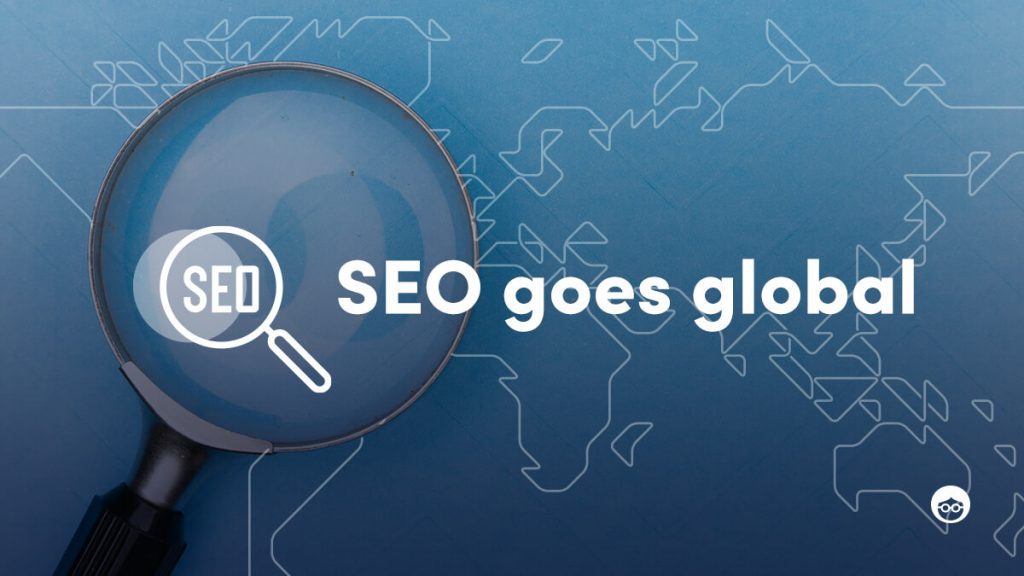
Do you have customers in multiple countries? Do you have an audience base of foreign language(s) speakers? Then it is time to expand your SEO strategy beyond your home shores.
#WeRecommend
- SEO Writing Checklist for Non-SEO Professionals

- Tools for Publishers to Tackle Core Web Vitals

- Building Your Own Web Vitals Dashboard

International SEO is about optimizing your website for foreign countries and languages. Think local SEO, but at scale.
Success in international SEO depends on how well you can appeal to the needs and demands of your audience in your target countries. Therefore, such expansion requires prior market research and a knowledge of how Google handles multilingual and multi-regional sites. Also, in scaling your web presence, some of the most important decisions you would take revolve around website and language optimization.
Market Research
International SEO usually begins with a spike in foreign traffic or physical expansion to foreign countries necessitating increased web presence. But such a decision should not be arbitrarily triggered. A sharp increase in foreign traffic does not guarantee international SEO success. Scaling up your strategy just because of that would set your brand up for failure.
Instead, begin with figuring out what exactly is attracting your international audience. This includes keywords, webpages, and backlinks. The top factors that win foreign visitors over would form the building blocks for your expansion strategy.
It is not advisable to assume that the best-performing keywords in one region would also rank the highest in another. Therefore, you have to start from scratch. And background studies must be carried out separately for each target country. When creating a list of target keywords, watch out for the following factors:
- Specific Relevance. Do the keywords meet the needs of your target audience in that country?
- Keyword Search Volume. How frequently do searches for these keywords appear in the target location?
- Keyword Difficulty. How competitive are the keywords in the target country?
How Google ranks international content
Google’s robust algorithm can automatically figure if a website/webpage has alternate versions. But as Google itself admits, it is better to inform Google about the variations. This would enable the search engine to automatically direct users to the version(s) of your website most relevant to them.
Note that Google does not determine the language on a webpage through lang attributes, URL structure, or any other code information. Instead, it uses the visible text on the web page to automatically ascertain its language.
Despite all these, depending on the country and/or language(s) you are targeting, you might need to expand your SEO focus beyond Google. While Google has, by far, the greatest market share globally in the search engine industry (over 90%), there are countries where other search engines beat Google. Baidu is the most popular search engine in China while Yandex holds that title in Russia. Research the predominant search engine(s) in your target countries before setting up your strategy.
URL Optimization
The question of the right URL structure to use when targeting foreign countries is a bone of contention among webmasters. There are a few options to choose from and I examine the three most common choices below.
Country Code Top-Level Domain (ccTLD)
Country-specific TLDs are two-letter codes indicating the host country of a website. For instance, company.fr for a France-hosted website. Ikea, Amazon, and Disney use ccTLDs.
This URL structure gives the strongest geo-targeting as it leaves no one (not search engine bots, not your audience) in doubt of the country targeted. However, using ccTLDs means that you must create different websites for each target country. This is a small deal for giant brands with a global appeal. But otherwise, it is a hassle.
The new websites would start at the bottom, with zero domain authority, and would have to work their way up. Besides, ccTLDs are expensive and heavy on infrastructure, and maintenance can be time-consuming.
Subdirectories
Instead of having to create multiple websites per country, the subdirectories option allows you to place the content for foreign countries or languages in a sub-folder within the root domain. The root domain maintains its gTLD.
To target France, for instance, the structure would be company.com/fr or company.com/fr-fr to target French-speaking visitors. Subdirectories are the favorite of many global brands including Microsoft, Skype, Samsung, etc.
Subdirectories are easier to set up, compared to ccTLDs, but they do not offer strong geotargeting as do ccTLDs and subdomains. However, a huge advantage of this approach is the consolidation of link building efforts. Since every version of the website is in a single root domain, search engine domain authority is concentrated in one location, rather than on different websites.
Subdomains
Subdomains, like ccTLDs, require the creation of multiple websites per country. However, they are easier to set up and maintain, compared to the latter.
This option involves using a generic Top-Level Domain (gTLD) such as .com with a country-specific or language-specific subdomain. To target France or a French-speaking audience, you would structure your site URL thus: fr.company.com. WordPress, Wix, and Alibaba use subdomains with gTLDs.
Of the three options, subdomains with gTLDs are the least favored. They are not a significant improvement over ccTLDs, neither are they better than subdirectories in targeting languages. Subdomains spread domain authority and might drag link building strategies, especially for brands with an average reputation.
Local/Regional Messaging
When targeting multiple countries, you certainly need to duplicate content in the major language(s) spoken in those countries. By the way, creating multiple versions of the same piece of content in different languages does not count as duplicate content, according to Google.
The best practice for adapting content into different languages is to hire native speakers to do the translation. Machine translations are not yet good enough and may give poor results.
In addition, local messaging does not end with translating the main content on your website. Don’t simply translate content from one language to another, especially when targeting different countries. Understand that your audience is different. Therefore, the language, tone, and style of your content must be tailored to your respective audiences.
See the two Toyota homepages below, for Australia, and France. Notice how the two websites display location-specific contact details.
Local messaging extends to localizing every important information on the website including currency, time zones, weather information, contact information (addresses and phone numbers), etc. And this is not only necessary for e-commerce brands.
Finally, it is not advisable to automatically redirect users to a different language based on a parameter such as location. It may not be necessary, and that would result in an unpleasant experience for your visitors. The acceptable practice is to add links to versions in other languages so that the user may switch to their preferred choice.
Or you may take a cue from Ikea. The homepage of the main Ikea website is displayed below. Notice that there is a drop-down option for a user to select the specific regional version of the website that they want to visit.
Conclusion
International SEO might daunt, but it is worth the effort if you are building a global brand. There is no ubiquitous success model, apart from putting your audience first and letting market needs define your strategy. If you have been getting a lot of foreign traffic, you probably need to redirect your SEO towards the source of the attraction. The internet has decentralized visibility; you can maintain a strong web presence in countries where you have no physical offices.